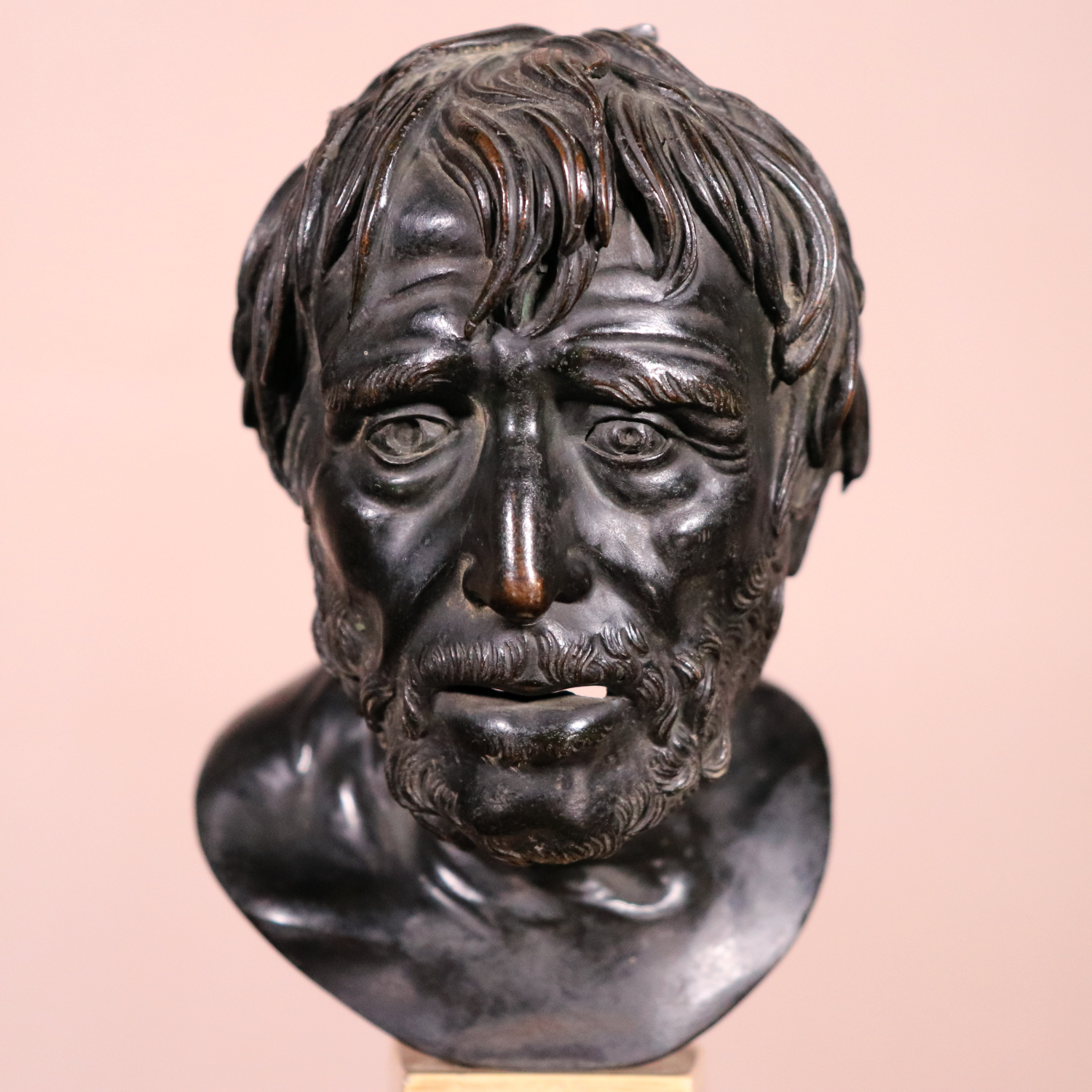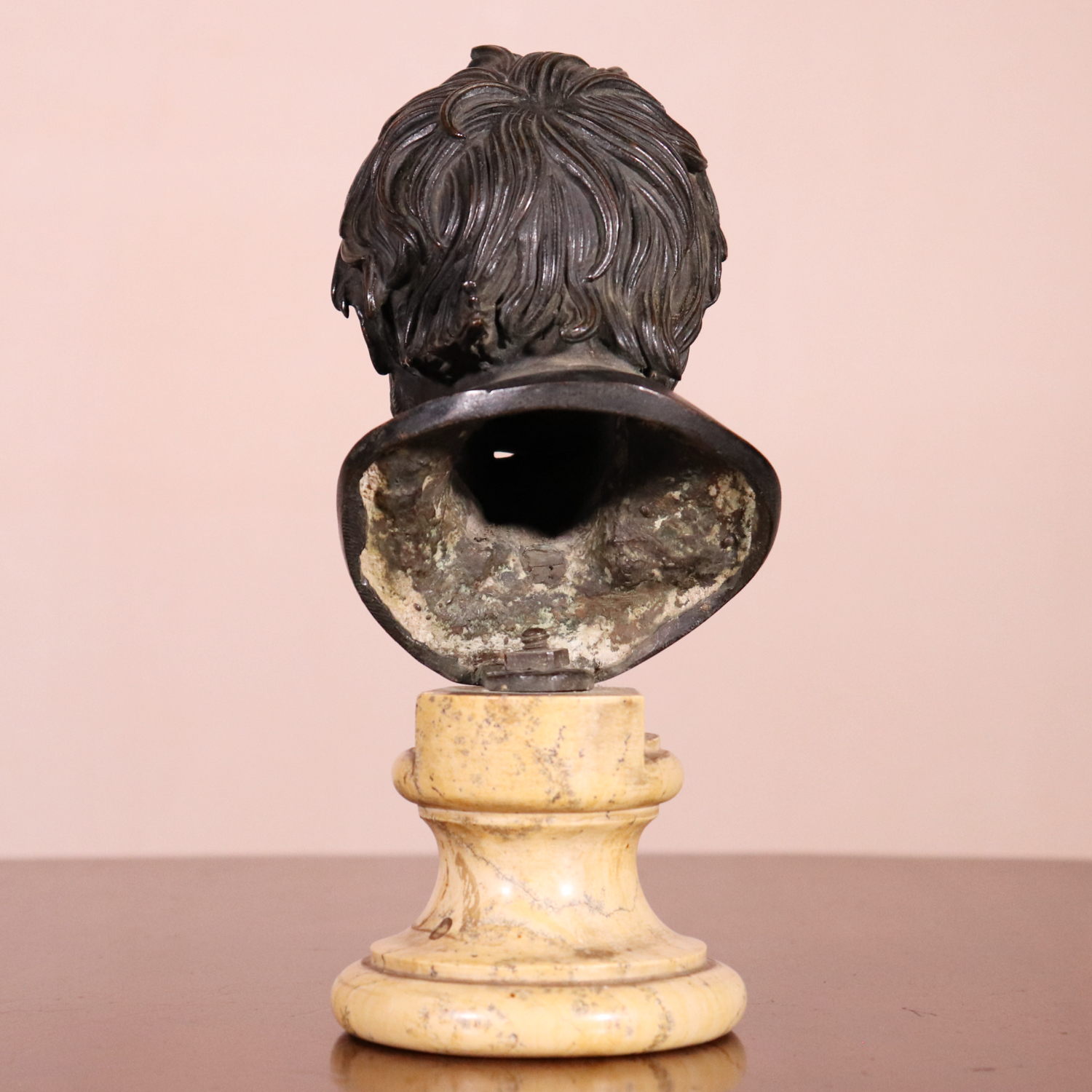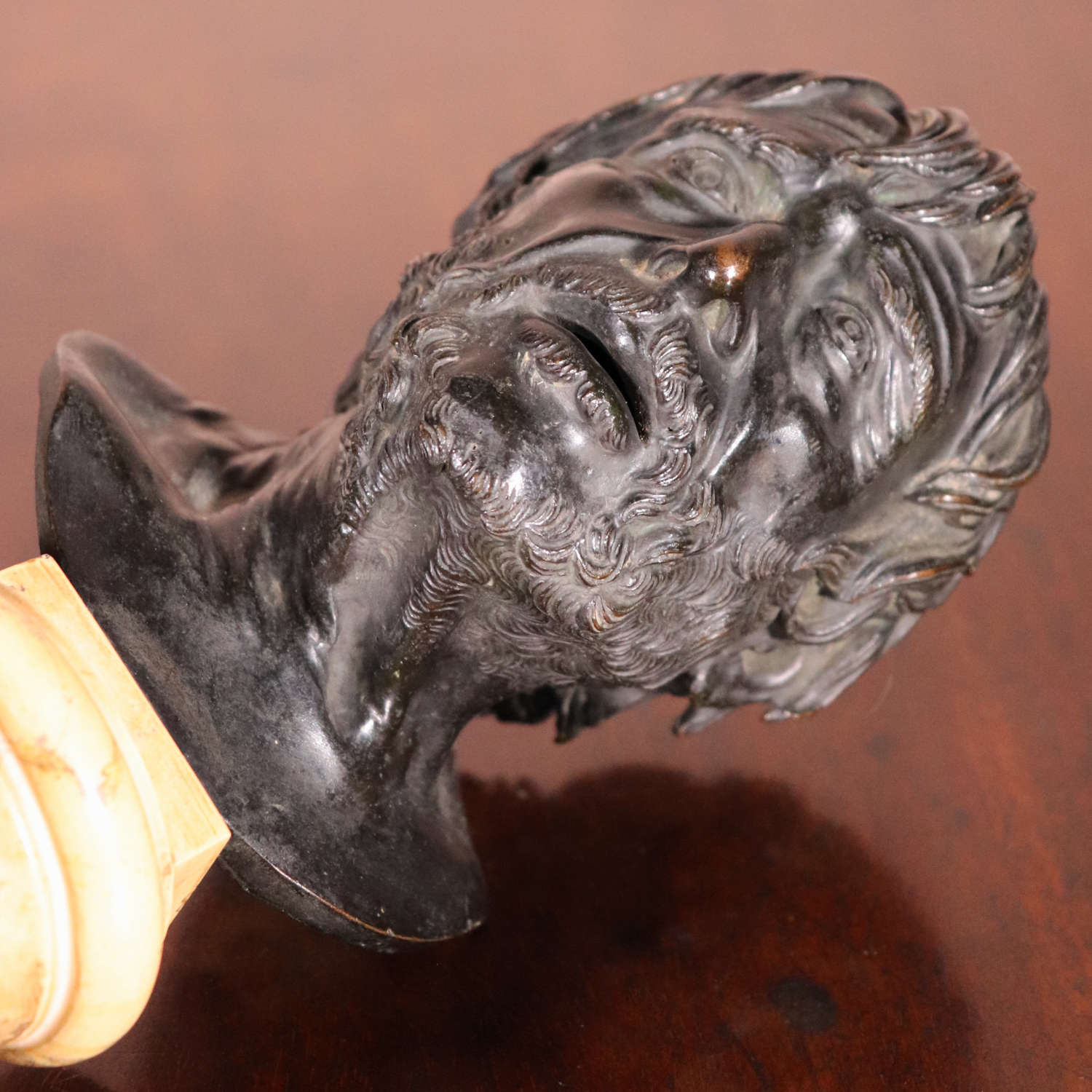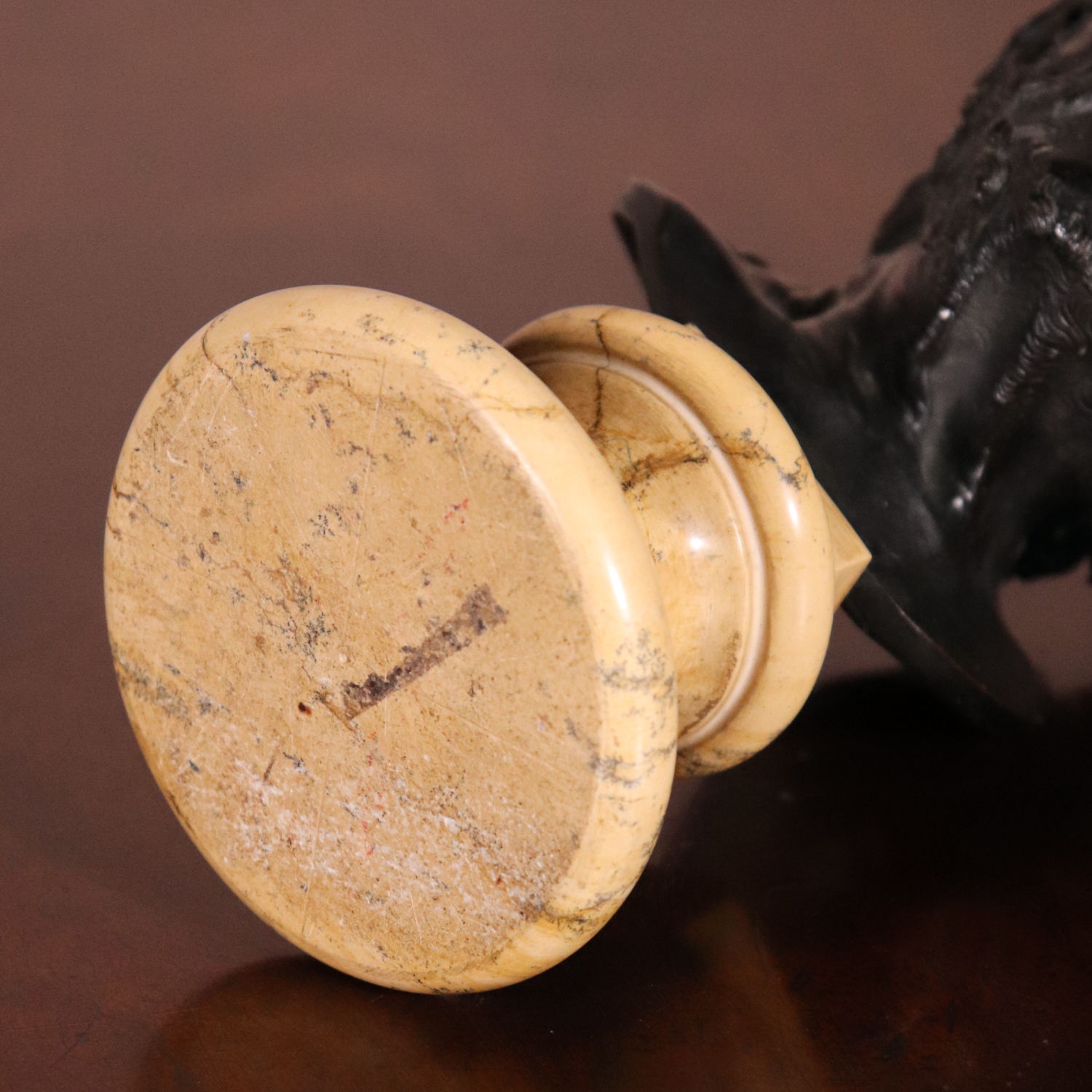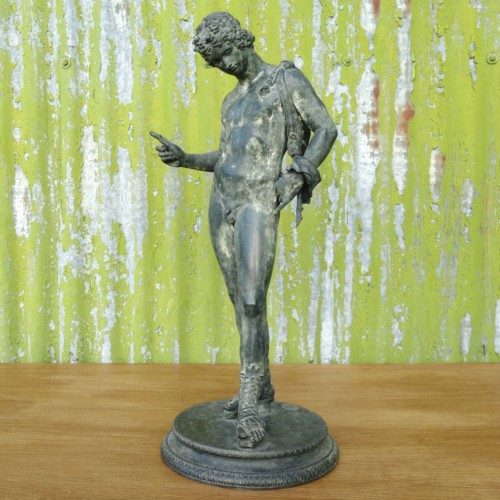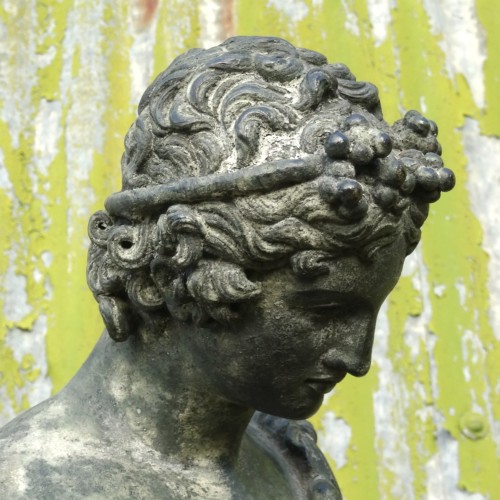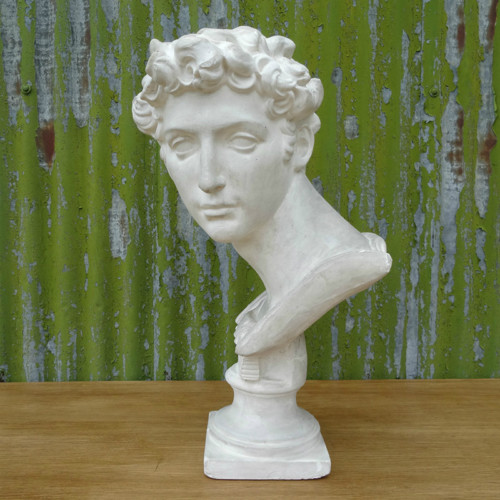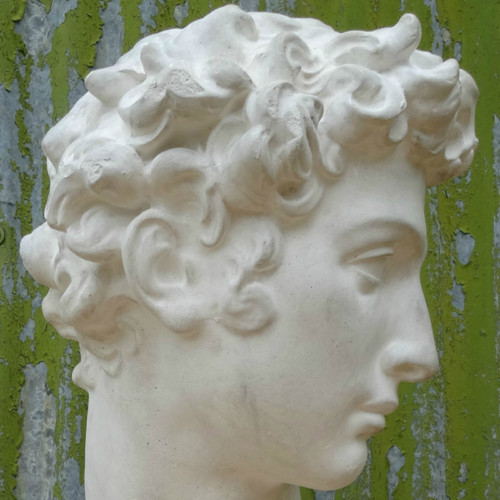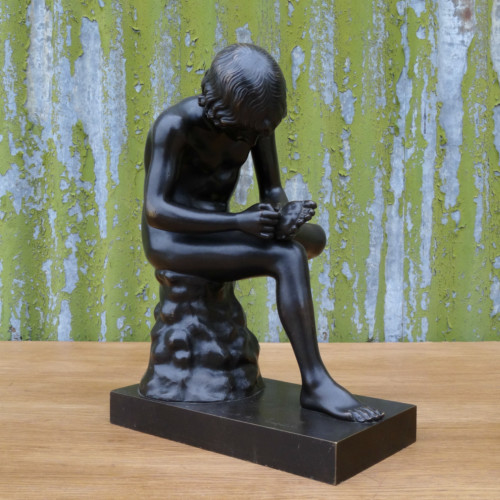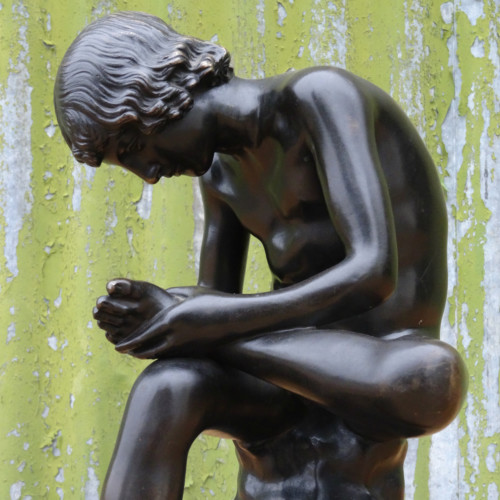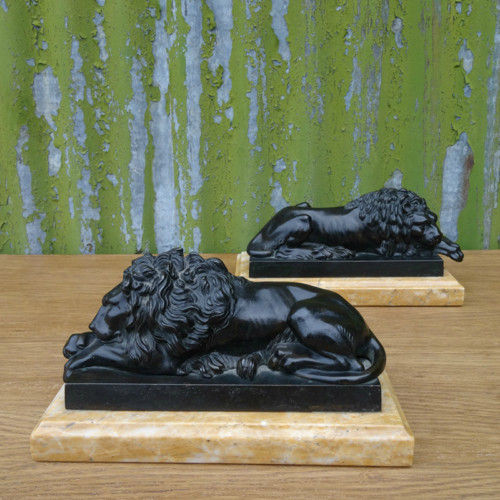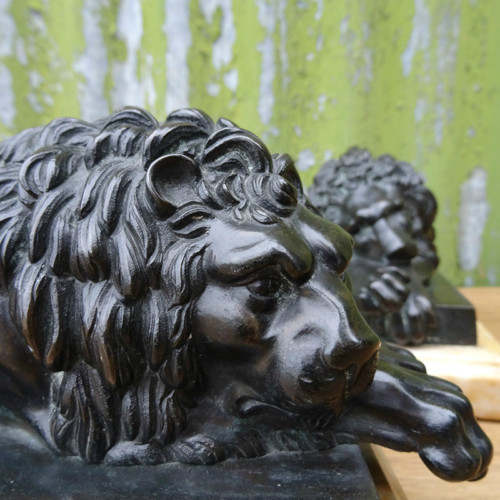A small Neapolitan patinated bronze bust of Seneca, known as the Pseudo Seneca, Naples, Italy, circa 1880, after the Antique, attributed to the Chiurazzi or Sabatino de Angelis & Fils foundry, finely cast and with a good patina, on a scagliola Sienna socle base.
The Pseudo Seneca is a Roman bronze bust of the late 1st century BC, that was discovered in the Villa of the Papyri at Herculaneum in 1754. It was originally believed to depict Seneca the Younger, the Roman philosopher, because its emaciated features were supposed to reflect his Stoic philosophy. However, modern scholars agree it is likely a fictitious portrait, probably intended as either Hesiod or Aristophanes. It is thought that the original example was a lost Greek bronze of circa 200 BC. The bust is conserved in the Museo Archeologico Nazionale, Naples.

